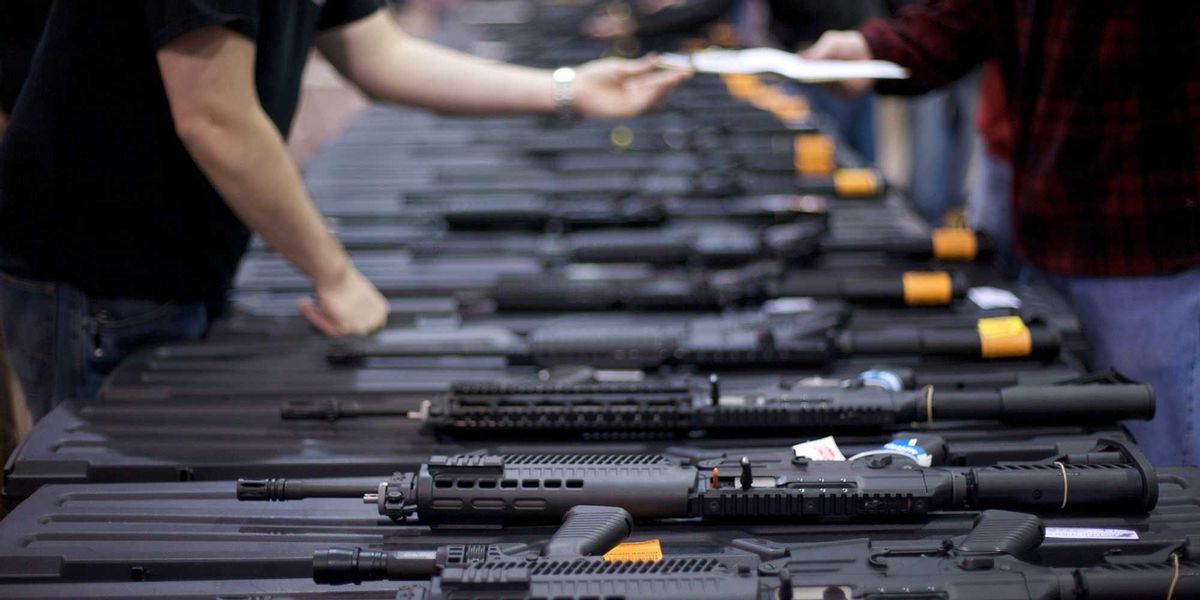From 2014 to 2015, the United States experienced its largest annual increase in firearm deaths over the past 35 years, a 7.8 percent upturn in a single year. In 45 of the 50 states the rate of overall deaths from firearms increased and the firearm homicide rate rose in every state except West Virginia. ![]()
What did Congress do to confront this problem? Only four bills addressing firearm violence made it out of committee during the 2015-2016 congressional session. Not one was enacted.
Because of inaction on the part of the federal government, it is up to each individual state to develop its own policies to reduce gun violence. To evaluate the effectiveness of these laws, researchers and policymakers need a way to track differences in state firearm legislation over an extended time period. Previously, there was no such resource.
We have just released a new public database that tracks a wide range of firearm laws across all 50 states for the past 27 years.
For the first time, long-term trends in the enactment of gun safety laws can be compared between states. We found striking disparities between states in both the number of firearm laws and the rate of adoption of these laws over time.
Fewer limits for gun owners
Our database includes 133 different measures intended to reduce gun violence, noting the presence or absence of each in all 50 states from 1991 to the present.
Five states currently have fewer than five of these 133 possible firearm law provisions in place, while two states have 100 or more. Between 1991 and 2016, one state enacted 62 of the firearm law provisions, while 16 states actually repealed more provisions than they enacted.
States are increasingly enacting laws that allow people to shoot other people as a first resort in public, instead of retreating when threatened. If a person perceives a threat of serious bodily harm, so-called “stand your ground” laws allow them to fire their gun with immunity from prosecution, as long as they are in a place they have a legal right to be. Between 2004 and 2017, 24 states enacted a “stand your ground” law.
States are also increasingly loosening the requirements for carrying concealed weapons. Today, there are 12 states that allow people to carry a concealed weapon without any permit or license. This year alone, three states have already enacted laws that eliminate required permits for carrying concealed weapons.
More laws are being enacted to protect the gun industry
States are also increasingly enacting laws that protect the gun industry from potential liability. These laws prevent citizens who are injured by firearms from suing gun manufacturers for damages resulting from the misuse of their products. They also stop local governments from filing lawsuits against gun manufacturers.
No other consumer product manufacturer enjoys such broad immunity. A similar law at the federal level resulted in the dismissal of a lawsuit against gun manufacturers brought by the families of children killed in the Newtown tragedy in Connecticut.
While only seven states had such a law in 1991, 33 states now have a gun industry immunity law.
In 1998, the Federal Bureau of Investigation implemented a federal background check system for gun purchases from licensed dealers. Since then, only eight states have closed a loophole in this law by requiring universal background checks for all firearm purchases in their state, even those from unlicensed sellers. This “gun show loophole” allows any adult to purchase a gun without being subject to a background check merely by purchasing from a private seller, rather than a licensed dealer.
Today, adults in 37 states can legally purchase a firearm from a private seller without being required to undergo a background check.
There is, however, one area of gun regulation that most of the states, even those with very few other gun safety laws, are progressively pursuing: laws that prohibit domestic violence offenders from possessing firearms. In 1991, only three states had enacted laws that prohibit gun possession by people convicted of misdemeanor crimes of domestic violence. Today, 28 states have such laws in place.
In a similar shift, in 1991, not a single state prohibited firearm possession by people subject to permanent domestic violence-related restraining orders. Today, 27 states have this provision.
Why our database matters
By examining trends in firearm legislation, rather than just looking at a single snapshot in time, we can discover patterns in firearm law adoption.
These patterns may reflect changes in social norms or specific lobbying campaigns by special interest groups.
For example, the surge in “stand your ground” laws was not a coincidence, but the result of a concerted National Rifle Association lobbying campaign. Florida’s 2005 law — the second to be adopted, after Utah’s in 1994 — was crafted by former NRA president Marion Hammer. These laws were pushed by the American Legislative Exchange Council (ALEC), of which the NRA was a member. An NRA official co-chaired an ALEC committee that drafted a model law, which was then introduced in states throughout the country.
More than anything else, this database is intended to help researchers evaluate the effectiveness of different state-level approaches to reducing gun violence. By examining the relationship between changes in these laws over time and changes in firearm mortality, researchers may be able to identify which policies are effective and which are not.
In our view, legislators must balance the protection of the constitutional right to possess a firearm for self-defense with the responsibility to reduce firearm-related injury and death. To do this, they need to distinguish policies that effectively reduce firearm violence from those that are ineffective and therefore superfluous. Reliable longitudinal data can help them find ways to mitigate the impact that gun violence has on the lives of thousands of Americans each year.
Michael Siegel, Professor of Community Health Sciences, Boston University and Molly Pahn, Research Manager, Boston University



Shares